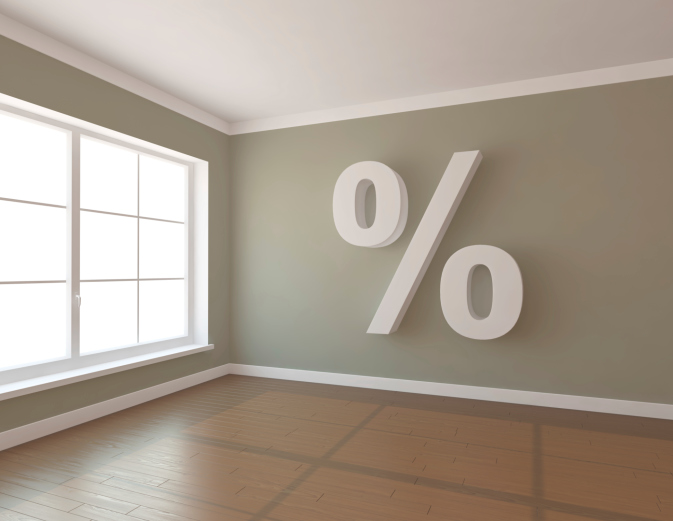 There are a lot of people who are wondering if now is the right time to move or refinance their current home loan. With interest rates still favorable, a lot of homeowners have the potential to save a lot of money if they are able to secure a home loan with a lower interest rate. There are two ways homeowners can secure a home loan with a lower interest rate. The first is to refinance. The second is to move. Which option is better? There are a few key points to keep in mind.
There are a lot of people who are wondering if now is the right time to move or refinance their current home loan. With interest rates still favorable, a lot of homeowners have the potential to save a lot of money if they are able to secure a home loan with a lower interest rate. There are two ways homeowners can secure a home loan with a lower interest rate. The first is to refinance. The second is to move. Which option is better? There are a few key points to keep in mind.
Taking A Closer Look At Refinancing
There are a lot of homeowners who have an abundance of equity currently built up in their homes, making this a great time to refinance. With a refinance, there are multiple options available. Some homeowners might refinance to access the equity in their homes, allowing them to complete a project. Some homeowners might refinance in an effort to pay off their home loan sooner. If homeowners are trying to access more equity, or are trying to shorten the term of the loan, then refinancing might be the smart move.
Looking At The Option Of Moving
The other option is to get a new home loan entirely by moving. This is an attractive option for homeowners who might have a dream house they would like to move to. In particular, any homeowner who currently has a home loan with a high interest rate should consider moving into their dream home now. Because mortgage rates are low right now, this is a chance for homeowners to move into a larger house while keeping their mortgage payments the same or less by obtaining a lower interest rate.
Every Situation Is Different
In the end, every situation is different. Because interest rates right now are so low, now could be the time for homeowners to consider moving or refinancing. Switching to a home loan with a lower interest rate could save tens of thousands of dollars over the life of the loan. Anyone with questions or concerns should reach out to a professional for help.

 One of the more common methods that home loan applicants use to find the best loan program available is to compare interest rates, but choosing the lowest rate possible is not always the best option available. In fact, in some cases, it may be one of the least advantageous options when all factors are considered. With a closer look, home mortgage applicants may decide to review other factors in combination with the interest rate to make a more informed decision when applying for a new loan.
One of the more common methods that home loan applicants use to find the best loan program available is to compare interest rates, but choosing the lowest rate possible is not always the best option available. In fact, in some cases, it may be one of the least advantageous options when all factors are considered. With a closer look, home mortgage applicants may decide to review other factors in combination with the interest rate to make a more informed decision when applying for a new loan. Unless someone works in the real estate or mortgage industry, there is a high likelihood that they are going to run into unfamiliar terms. Appraisals, underwriting, and private mortgage insurance are a few of the examples. One of the most common terms that people might run into is termed mortgage points. Even though the term “points” might sound positive, this is not always the case. What do people need to know about mortgage points?
Unless someone works in the real estate or mortgage industry, there is a high likelihood that they are going to run into unfamiliar terms. Appraisals, underwriting, and private mortgage insurance are a few of the examples. One of the most common terms that people might run into is termed mortgage points. Even though the term “points” might sound positive, this is not always the case. What do people need to know about mortgage points?  When applying for a new home mortgage, many loan applicants initially consider applying for a 30-year fixed rate mortgage. This is perhaps the most common and traditional type of mortgage available. It allows you to enjoy the opportunity to pay for your home over the course of 30 years with equal payments every month. While this is one option, there are actually multiple choices available. For some applications, a variable rate mortgage may be more advantageous. If you are comparing the options between a fixed rate and a variable rate mortgage, you may consider a few points.
When applying for a new home mortgage, many loan applicants initially consider applying for a 30-year fixed rate mortgage. This is perhaps the most common and traditional type of mortgage available. It allows you to enjoy the opportunity to pay for your home over the course of 30 years with equal payments every month. While this is one option, there are actually multiple choices available. For some applications, a variable rate mortgage may be more advantageous. If you are comparing the options between a fixed rate and a variable rate mortgage, you may consider a few points. When you initially start shopping for a home mortgage, you may be drawn to advertisements for ultra-low interest rates. These may be rates that seem too good to be true, and you may gladly contact the lender or mortgage company to complete your loan application. However, the unfortunate truth is that all too often, mortgage applicants are unpleasantly surprised and even disheartened to learn that they do not qualify for the advertised interest rate. By learning more about the factors that influence your interest rate, you may be able to structure you loan in a more advantageous way.
When you initially start shopping for a home mortgage, you may be drawn to advertisements for ultra-low interest rates. These may be rates that seem too good to be true, and you may gladly contact the lender or mortgage company to complete your loan application. However, the unfortunate truth is that all too often, mortgage applicants are unpleasantly surprised and even disheartened to learn that they do not qualify for the advertised interest rate. By learning more about the factors that influence your interest rate, you may be able to structure you loan in a more advantageous way.